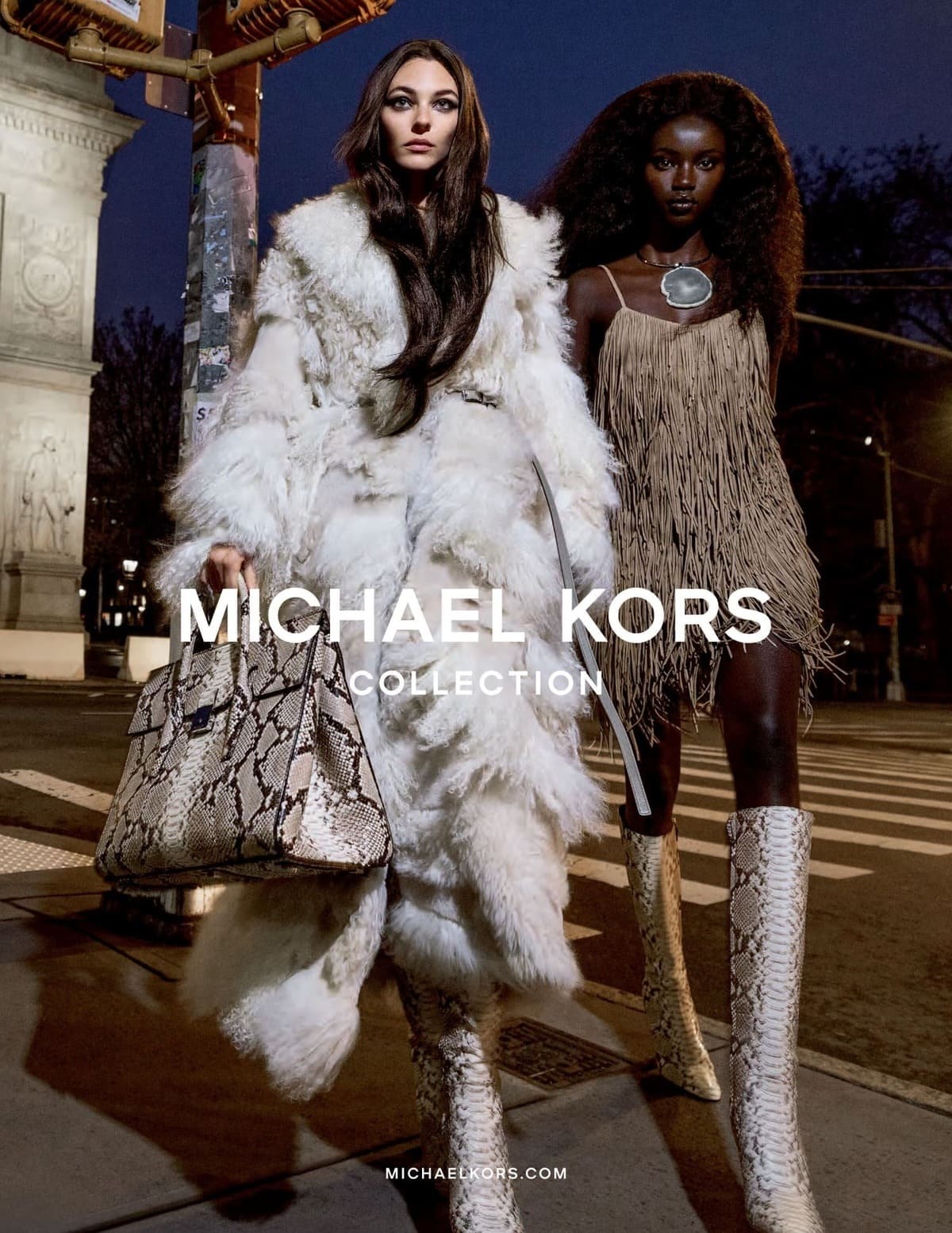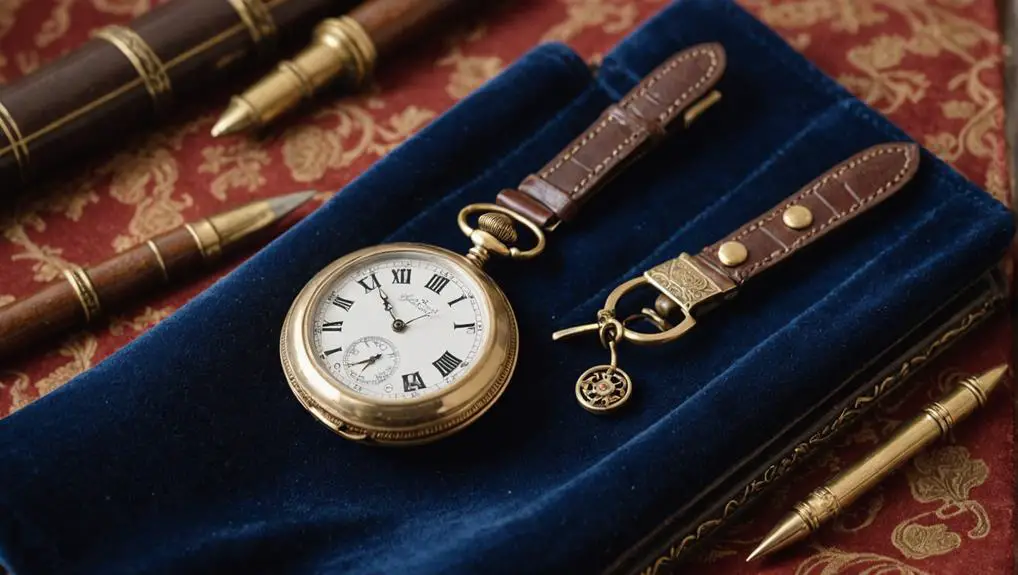Michael Kors has been a dominant force in the fashion industry since the early 1980s, epitomizing a blend of luxury and accessibility that has captured the hearts of fashion enthusiasts worldwide. From the inception of his brand, Michael Kors has cultivated a reputation for timeless elegance and sophisticated design, appealing to a broad spectrum of consumers. His journey from a young designer to a household name in fashion is marked by strategic expansions, iconic collections, and a relentless drive for innovation.
The Michael Kors brand is celebrated for its wide range of products, including accessories, footwear, watches, jewelry, and ready-to-wear clothing for both men and women. The company operates under two primary labels: Michael Kors and Michael Michael Kors, each catering to different segments of the market. This dual-label strategy has allowed Kors to maintain an exclusive, high-end appeal while also providing more accessible luxury options. In the fiscal year ending April 1, 2023, the brand reported a total revenue of $3.88 billion, underscoring its significant impact on the global fashion market.
Over the years, Michael Kors has successfully navigated the complexities of the fashion industry, leveraging both wholesale and retail channels to expand his brand’s presence globally. With flagship stores in major cities like New York, London, Paris, Milan, Tokyo, and Shanghai, Kors has positioned his brand as a staple of modern luxury. His designs, known for their clean lines and versatile appeal, have resonated with a wide array of customers, from everyday fashion lovers to high-profile celebrities and public figures.
Understanding the historical evolution of the Michael Kors logo and tags is crucial for vintage enthusiasts seeking to authenticate and date their pieces. The brand’s logos have evolved over the decades, reflecting changes in branding strategies and market trends. Similarly, the tags on Michael Kors clothing have transitioned from simple, bold designs in the 1980s to sleek, minimalist aesthetics in recent years. By examining these elements, collectors and fashion aficionados can gain insight into the era of their Michael Kors items, enhancing their appreciation and understanding of this iconic brand’s rich history.
Michael Kors x Macy’s Fragrance TV Commercial
How to tell if Michael Kors is vintage from the logo
Michael Kors has been a prominent name in fashion since the 1980s, known for its sophisticated and luxury accessories. Determining if a Michael Kors item is vintage can often be done by examining the logo. Over the years, the brand has used distinct logos that reflect its evolution and branding strategy. Here’s a guide to identifying the era of a Michael Kors item based on its logo.
1981 to now Michael Kors logo
- This logo features the full name “MICHAEL KORS” in a clean, sans-serif font.
- The letters are capitalized and evenly spaced, giving a modern and elegant look.
- This logo has been a constant in various forms of branding, from tags to engravings on hardware.
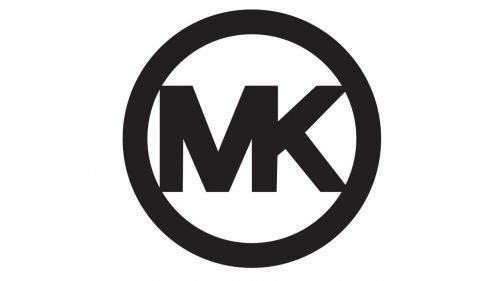
1981 to now Michael Kors logo
2006 to now Michael Kors logo
- This logo is characterized by the initials “MK” encircled, representing the brand’s initials.
- The letters “MK” are bold and sans-serif, placed inside a circular emblem.
- This emblematic logo is often found on handbags, accessories, and some clothing items, providing a more minimalist and recognizable branding.
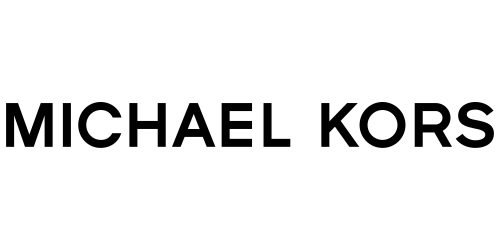
2006 to now Michael Kors logo
How to tell if Michael Kors is vintage from the tags
Identifying vintage Michael Kors clothing through its tags can provide valuable insight into the authenticity and era of the piece. Over the decades, Michael Kors tags have transitioned from simple and bold designs to more modern and sleek aesthetics, each reflecting the brand’s evolving identity. From the straightforward tags of the 1980s to the minimalist designs of the 2010s, each era’s tags offer distinct features that can help date a garment. Here’s a detailed guide to recognizing vintage Michael Kors clothing by examining the tags from the 1980s to today.
Need help with vintage tags or labels? Upload a picture on our vintage tag identification page, and we’ll assist you!
1980s vintage Michael Kors tags
- Tags often feature a simple design with “MICHAEL KORS” in bold, uppercase letters.
- Commonly include “MADE IN U.S.A.” text, indicating domestic production.
- Size information is usually included on a separate, smaller tag.
- Collaborations or special collections might include additional tags, such as “100% CASHMERE” or partner brand tags (e.g., “Lyle & Scott“).
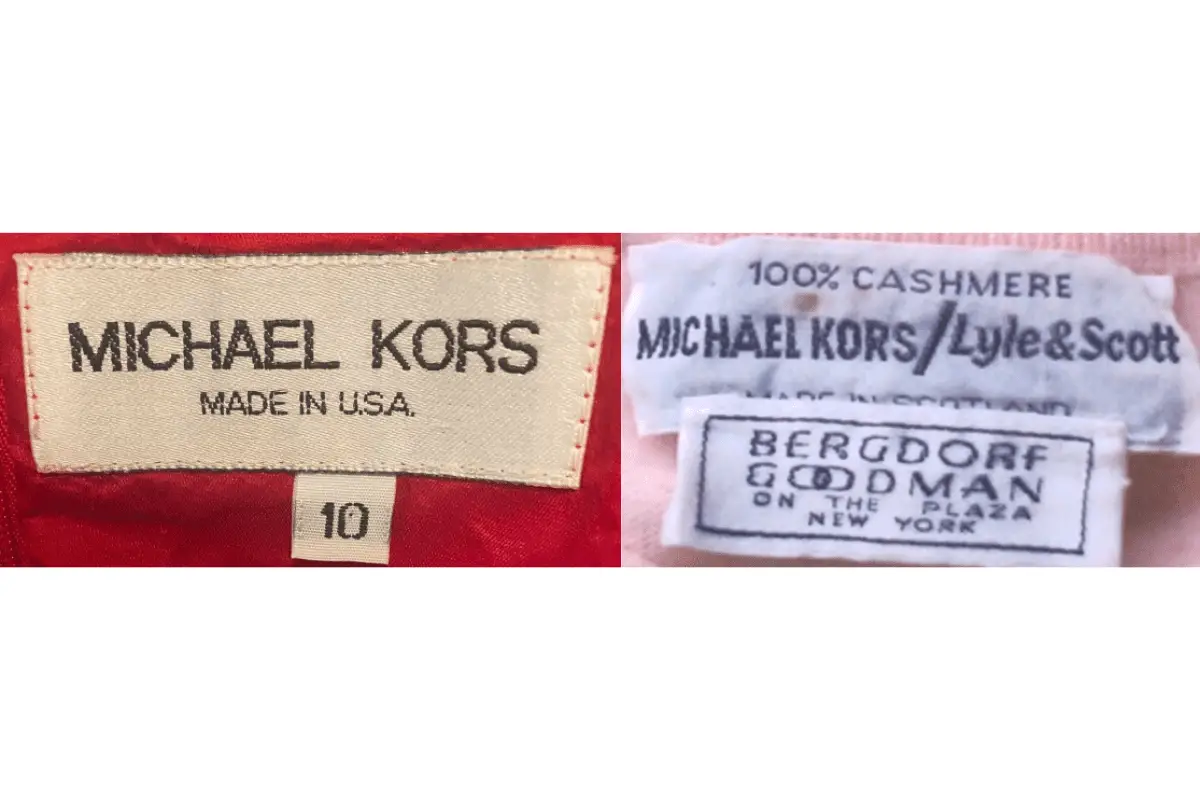
1980s Michael Kors tags
1990s vintage Michael Kors tags
- Tags often feature “KORS MICHAEL KORS” in bold, uppercase letters.
- Materials and care instructions are typically detailed on a separate tag below the main label.
- Made in U.S.A. indications continue, reflecting high production standards.
- Text may include additional information like RN numbers or CA numbers.
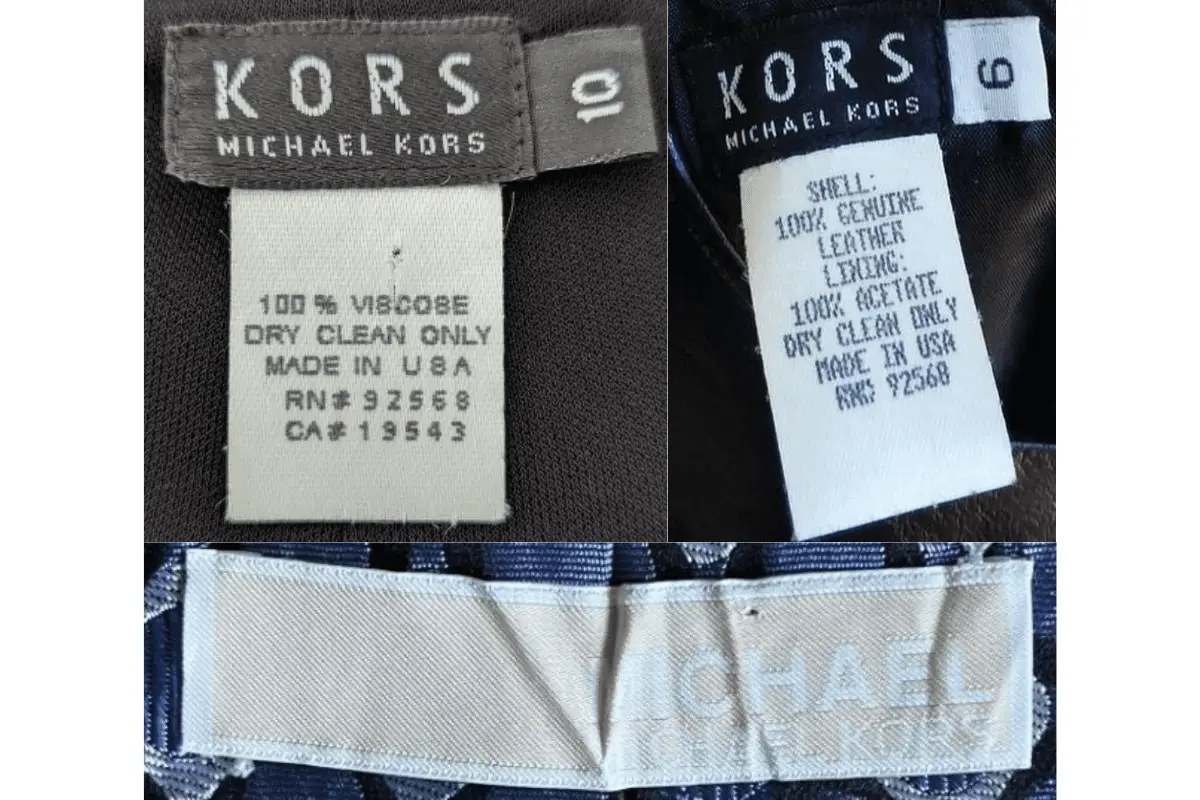
1990s Michael Kors tags
2000s vintage Michael Kors tags
- Tags from this era have a more modern look with cleaner fonts.
- Introduced tags with loop design, often in darker colors.
- Bold, serif lettering is maintained, with “MICHAEL KORS” prominently displayed.
- Size and origin information are typically found on separate tags, with varied locations of manufacturing (e.g., Italy, Vietnam).
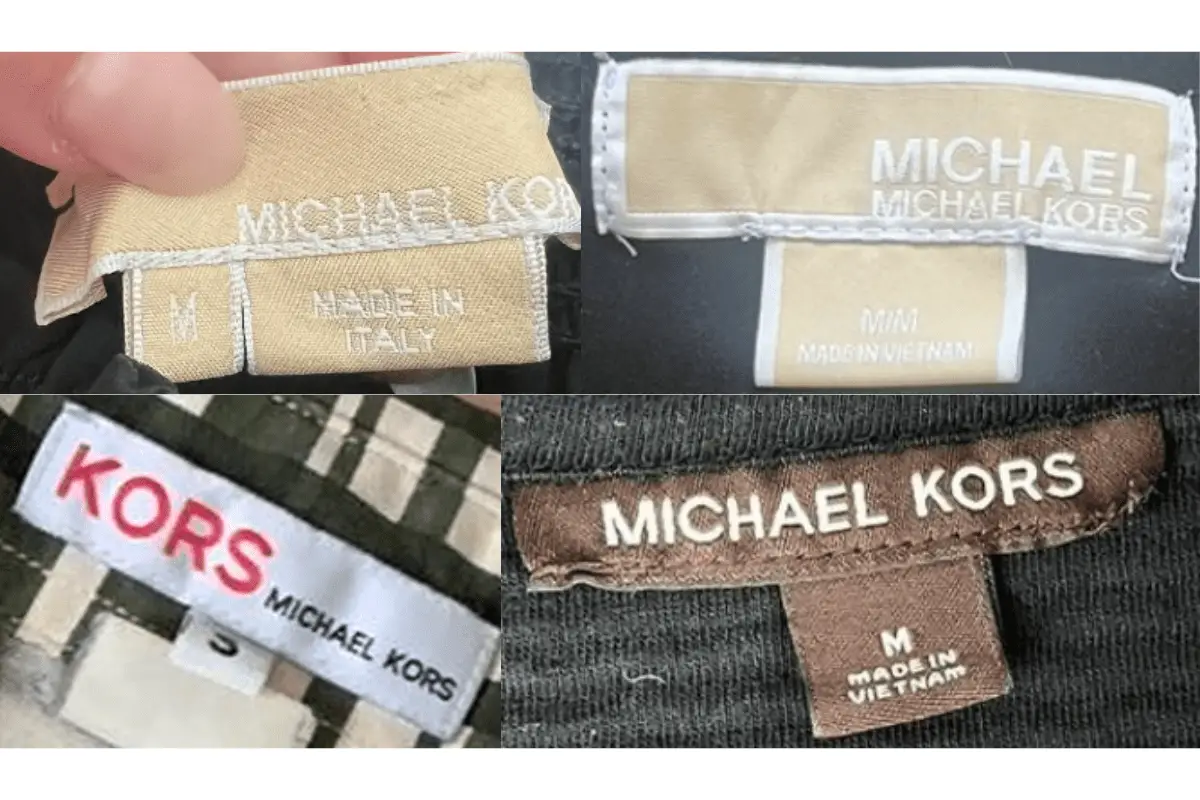
2000s Michael Kors tags
2010s vintage Michael Kors tags
- Modern tags with a sleek, minimalist design.
- Various colors and materials used, ranging from fabric to plastic.
- Tags often include size information and origin (e.g., Made in China, Vietnam) directly on the main tag or on a separate attached tag.
- Incorporation of new branding elements like “MK” logo in some cases.
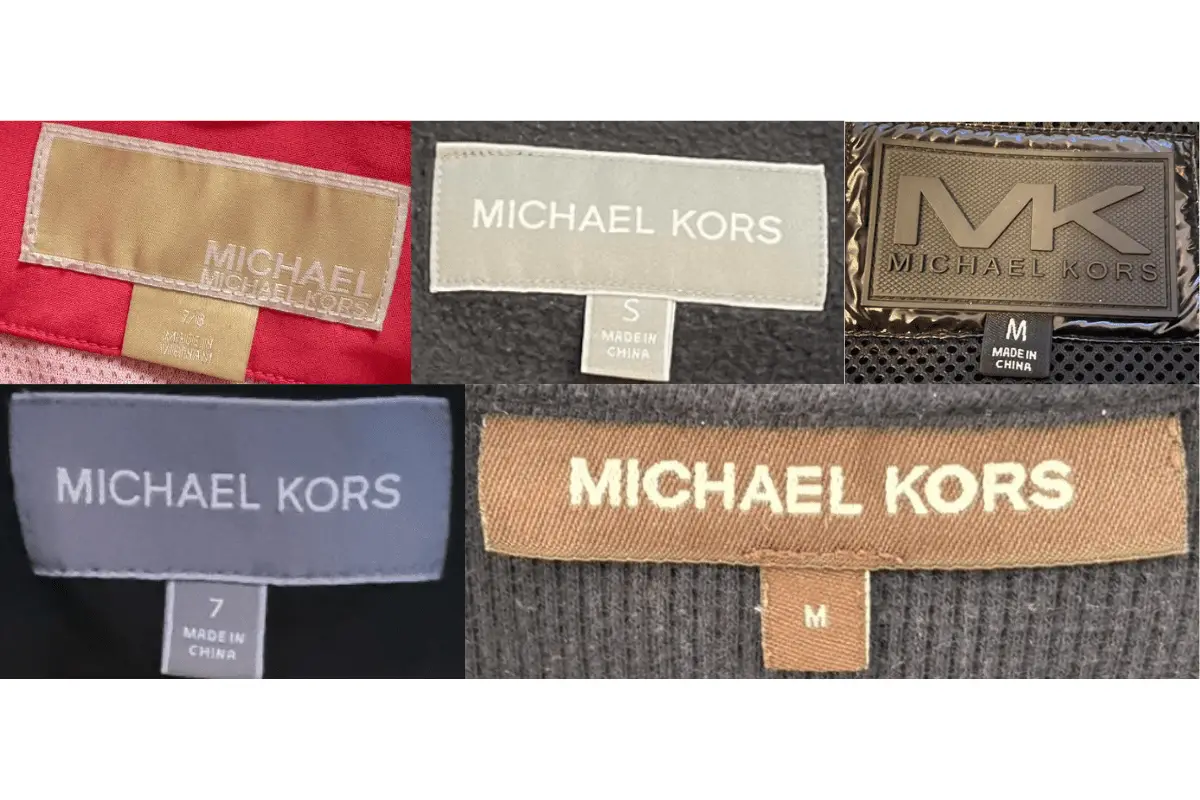
2010s Michael Kors tags
